Swimming equipment for triathlon

- 1. Essential Swimming Equipment for Triathlon Training
- - Understanding the Basics: Swim Caps, Goggles and Swimsuits
- - The Variety and Utility of Wetsuits
- - Swim Fins: Technique and Endurance Improvement
- - Paddles and Pull Buoys: The Role in Strength and Technique Development
- 2. Evaluating the Pros and Cons of Different Swimming Equipment
- - Swim Caps: Silicone vs. Latex
- - Goggles: Exploring Lens Options and Fit
- - Swimsuits: How to Choose the Right One
- - Wetsuits: Neoprene Thickness and Flexibility
- - Swim Fins: Material and Size Consideration
- - Paddles and Pull Buoys: Determining the Right Fit
- 3. Steps to Care For and Maintain your Swimming Equipment
- - Proper Cleaning and Drying Techniques
- - Preventing and Repairing Damage
- - Lifespan Considerations and Replacement Guidelines
- 4. Making the Most Out of Your Swimming Equipment: Training Tips
- - Integrating Various Equipment into Swim Workouts
- - Maximizing Performance with Correct Equipment Use
- - Training Progressions: Knowing When to Add More Equipment
- 5. Compliance with Official Triathlon Rules Regarding Swimming Equipment
1. Essential Swimming Equipment for Triathlon Training
Diving into the world of triathlon training, the significance of essential swimming equipment cannot be overstated. The right gear is pivotal in not just honing your skills, but also amplifying your performance. Swim caps, goggles, and swimsuits form the triad of basic necessities. Perfectly streamlined swim caps reduce drag, while goggles protect your eyes and aid in unobstructed underwater visibility. Swimsuits, ensuring reduced resistance, must be chosen for their durability and appropriate fit. Your aggressive swim strokes demand additional aids like wetsuits, swim fins, paddles, and pull buoys. Immerse to emerge - equip for success and strengthen your swimming prowess with these indispensable tools.
- Understanding the Basics: Swim Caps, Goggles and Swimsuits
When it comes to triathlon training, the importance of understanding basic swimming equipment - namely, swim caps, goggles, and swimsuits - cannot be overstated. These essential items can not only enhance your performance but also ensure your comfort and safety. Let's start with swim caps. These seemingly simple pieces of gear are vital in reducing drag and protecting your hair from chlorine or saltwater. The two main types - silicone and latex - each have their unique benefits. Silicone caps, while more expensive, tend to be more durable, offer better heat retention, and are easier to put on or take off than their latex counterparts which are cheaper and lighter. Next, to optimize your vision underwater, you must invest in quality goggles. Look for ones with anti-fog properties for a clear view, and choose a snug fit to avoid leaks. Remember, options for lens type and color vary, catering to different environments and personal preferences. The last notable item is the swimsuit. Comfort, style and performance are the key factors to consider. A snug fit is crucial for minimizing drag, but avoid overly tight swimsuits that restrict movement or chafe. Your choice should also reflect the training conditions - open water practice might necessitate a wetsuit to retain body heat in colder environments. Understanding these basics lays the foundation for successful swimming training and prepares you for the demanding conditions of a triathlon. Therefore, get kitted properly and see the difference it can make in your overall performance!
- The Variety and Utility of Wetsuits
Stepping into the world of triathlon swimming, you will quickly realize the integral role wetsuits play in your journey. Not just your average swimming apparel, wetsuits are specifically designed to lengthen your time in the water, enhance buoyancy, and diminish the drag for intense sport like triathlon. Rendered from neoprene, wetsuits offer insulation, keeping your body comfortably warm even when the water temperature would have otherwise numbed your senses. Variance in their thickness further allows you to adapt to different temperature ranges, while their unique flexibility aids with unrestricted mobility during performance. The utility of wetsuits extends beyond these basic factors. The strategic design includes panels that can alter the swimmer's position in the water, promoting a higher hip position, and subsequently reducing drag. This not only allows for faster swimming but also conserves energy for the later sections of the triathlon. From full-suit variants designed for colder temperatures to shorty wetsuits for longer immersion in mild temperatures, the choices are plentiful, each equipped to enhance a different aspect of your swimming prowess. Selecting the right wetsuit could very well be the difference between a struggling swim and a soaring performance.
- Swim Fins: Technique and Endurance Improvement
Swim fins unquestionably play a crucial role in enhancing both the technique and endurance for any triathlon swimmer. These handy tools increase propulsion, enabling you to swim with greater speed and force, while also putting lesser strain on the arms. Not only does this translate to better stamina, but it also allows a more effective focus on improving your kicking technique. Choosing the right swim fin is paramount and needs careful consideration of factors such as its flexibility, size, and the type of training you are undertaking. Too stiff or too long, and they can lead to unnecessary leg strain; too flexible or short, and they may not offer the needed propulsion. Moreover, integrating regular fin workouts in your training regime can significantly boost your swim strength and overall endurance levels. These sessions can facilitate rigorous leg training, pushing your limits, and hence, improving muscle resistance and cardiac output over time. However, it remains important to balance your training with and without fins, to not overly rely on the fins for propulsion, but appreciate their value for technique correction and strength building. The goal is not to replace your natural swimming dynamics, but to augment them for better performance.
- Paddles and Pull Buoys: The Role in Strength and Technique Development
When it comes to enhancing your performance and refining your technique in the pool, paddles and pull buoys are two crucial pieces of equipment you shouldn't overlook. Swim paddles, typically made from plastic, are worn over your hands to increase water resistance. This ramps up the intensity of your upper body workout, bolstering your strength and endurance. On the other hand, pull buoys, often seen between the thighs of swimmers, help to control hip rotation and promote correct body alignment, focusing attention on the power of the arm stroke. Because it lifts your lower body to the surface, it aids in maintaining optimal buoyancy, enabling you to concentrate on refining your arm and shoulder techniques. However, practice moderation in their use as over-reliance on paddles may result in shoulder stress. Is it time then to integrate paddles and pull buoys in your swim workout? Absolutely! Remember, the key to successful training lies in versatility and consistency. By integrating these tools at the correct time and frequency, you'll see a marked improvement in your strength and technique, propelling you further in your triathlon journey. So, are you ready to dive right in?
2. Evaluating the Pros and Cons of Different Swimming Equipment
Diving into the waters of triathlon training necessitates a thorough understanding of swimming equipment. Crucial to note are the advantages and disadvantages inherent in the variety. Swim caps, for instance, come in silicone and latex. The former boasts higher durability and comfort, although it tends to be more expensive. Latex, conversely, offers a tighter fit and lighter feel but may not last as long. Goggles are another essential item, with lens options and fit deserving your attention. Mirrored and tinted lenses can combat glare, but clear lenses are better suited for standard or indoor conditions. Fit, ideally, should be snug but not too tight. Now, let's talk about swimsuits and wetsuits. Your choice of swimsuit should prioritize freedom of movement, while your wetsuit should balance neoprene thickness for buoyancy with flexibility. Don't forget about swim fins and paddles! Careful consideration of material and size will ensure they serve their purpose in improving your technique and building strength without causing discomfort or injury. Remember, no equipment is perfect - but armed with the right knowledge, you can make an informed decision that best suits your triathlon needs.
- Swim Caps: Silicone vs. Latex
Swim caps play a critical role in swim training and during a triathlon race. Especially when it comes to two popular materials - Silicone and Latex. Now, you might ask, which one is the right choice for you? Unzip the mystery yourself! Silicone swim caps, on one hand, offer supreme durability and comfort. Thanks to their thicker and non-porous nature, they are the go-to choice for swimmers with longer hair or those who face allergic reactions to latex. They maintain a snug fit without pulling your hair and retain heat better, making them an excellent pick for swimmers in cold water environments. Conversely, latex swim caps have a reputation for their lightweight attributes and lower cost. They’re thinner, creating less drag in the water for the competitive edge you might be seeking. However, they may not be the most comfortable on your hair, and a small percentage of individuals can have latex allergies. So, when you stand on the starting block, ready to dive into the water, remember that your choice of swim cap material should depend on various personal factors like comfort, price, allergy, and the water condition you’ll be swimming in. The cap that fits your need best will no doubt enhance your swim training and provide a smoother race day experience.
- Goggles: Exploring Lens Options and Fit
When it comes to selecting the right goggles, a thorough exploration of lens options and fit is crucial for an effective triathlon training. Diverse lens options come with varying advantages - clear lenses are suitable for low-light conditions, while tinted or mirrored lenses aid visibility in bright sunlight. Additional features like anti-fog and UV protection will elevate your comfort and safety during training sessions. But remember, these beneficial features are moot without a secure and comfortable fit. A pair of goggles that fits properly not only prevents water leakage but also guards against uncomfortable pressure points or chaffing around the eyes. So, how do you ensure a perfect fit? First, check the goggles' seal against your face - without the strap. If they stick to your face momentarily, you've got a good seal. Then, adjust the strap for a snug - yet comfortable - fit. But the real test will be during an active swim. Your goggles should remain comfortable and secure, without constant adjustments. Remember, finding the right pair of goggles often involves trial and error before you discover the perfect pair to accompany your triathlon journey! Choose wisely, because your vision underwater greatly affects your performance.
- Swimsuits: How to Choose the Right One
Choosing the perfect swimsuit for triathlon training can be quite an overwhelming task due to the vast variety of styles, designs, and materials. Nevertheless, it is an essential task, as the right swimsuit will not only ensure comfort but also enhance your performance. Firstly, the most critical factor to consider is the suit's fit. It should be snug to your body but not restrict your movement. Always check the suit's elasticity and flexibility to make certain you have a complete range of motion in the water. Secondly, material selection is equally significant. Favor swimsuits made from durable and chlorine-resistant materials like polyester or PBT (Polybutylene Terephthalate), as they can withstand rigorous training sessions. Thirdly, keep in mind that less is more when it comes to triathlon suits. Opt for designs that reduce drag and do not create unnecessary resistance in the water. Lastly, it's essential to select a suit that reflects your personal style. After all, feeling confident in your swimsuit can make your swimming experience much more enjoyable. So, whether you choose a one-piece, a bikini, or a pair of swim shorts, make sure you feel good in it.
- Wetsuits: Neoprene Thickness and Flexibility
When stepping into the world of triathlon, wetsuits are an indispensable piece of equipment. It's crucial to understand how the neoprene thickness and flexibility of your wetsuit impact your performance. Neoprene, being the primary material in wetsuits, contributes significantly to the suit's thermal insulation, buoyancy, and flexibility. The thickness of the neoprene typically varies between 1.5mm to 5mm. However, arguably, the flexibility of a wetsuit holds more weight than thickness. Remember, the thicker the neoprene, the warmer you'll stay, but at the cost of flexibility. Wetsuits with thicker neoprene can make your swim strokes more strenuous, whereas those with thinner material allow for a more extensive range of motion. A balanced wetsuit is all about strategic placement of neoprene thickness: thicker over your core for warmth and buoyancy, and thinner over your arms and legs to allow movement. So, what's the takeaway message here? Simply put, don't prioritize one over the other. Instead, find a well-rounded wetsuit that optimizes both thickness and flexibility to meet your swimming needs. After all, excelling in a triathlon doesn't only revolve around endurance and strength, but also the intelligent selection of equipment.
- Swim Fins: Material and Size Consideration
In your quest to excel in triathlons, a key point to consider is the role of swim fins. These essential pieces of equipment can vastly enhance your swimming technique and endurance. Choosing the right material and size is crucial. Fins made of natural rubber are often a favorite amongst seasoned triathletes, however, if you prefer a lighter, more accommodating alternative, silicone or polyurethane fins prove to be a brilliant choice. Size too, plays an integral role. Incorrectly sized fins can lead to discomfort, blisters or even hamper swim form. A well-fitted fin should feel snug, but never restrictive. Size chart can provide a helpful starting point, but nothing beats trying on a pair of fins to ensure a comfortable fit. Larger fins encourage leg strength and muscle endurance while smaller fins emphasize on swiftness and rhythm. An interesting tidbit, lighter colored fins are generally softer, making them great for long swim sets! Aiming for the sweet spot between material and size consideration can be the key to improving your swim leg in a triathlon. Remember, it's all about finding the gear that enhances your ability without impeding your progress. Happy training!
- Paddles and Pull Buoys: Determining the Right Fit
Identifying the correct fit for your **paddles** and **pull buoys** is crucial in maximizing their potential as crucial swimming equipment. Paddles should be big enough to help increase your arm strength and improve your stroke. However, be cautious not to choose ones excessively large, as it may put undue stress on your shoulders. Align the paddle with your hand properly – the widest part should be in line with the base of your fingers while the stick should go through between your middle and ring fingers. Regarding **pull buoys**, ensuring the right fit entails the perfect balance between comfort and practicality. Your pull buoy should fit comfortably between your thighs without being too tight that it disrupts your swim. Also, it needs to be buoyant enough to give your lower body the right lift, assisting you in focusing on your upper body movement. As you finalize your choices, bear in mind that the goal isn't just to secure the best equipment. Instead, it's about finding those which adapt to your unique needs and support your overall triathlon training journey. Stay informed about your options and consult experts if needed. Never forget that even the slightest swimming gear adjustments may produce substantial improvements in your performance.
3. Steps to Care For and Maintain your Swimming Equipment
Caring for your swimming equipment comes down to a few crucial pointers that extend their lifespan while ensuring optimal functionality during your hardcore triathlon training. First off, always rinse your gear post-workouts. Saltwater and chlorine can be harsh on your wetsuits, swim caps or goggles, gradually causing them to degrade or lose their perfect fit. Therefore, a thorough rinse with fresh water keeps them in top shape. Secondly, avoid using harsh cleaners or brushes that may cause damage. Instead, opt for a soft cloth and mild soap. Also, remember to completely dry your equipment in a well-ventilated area away from direct heat or sunlight. Last but not least is regular gear checks for wear and tear. Small rips on your swim cap or loose straps on goggles may seem negligible but can significantly affect your training efficiency. Keep a keen eye and replace damaged equipment promptly. Embracing these simple tips ensures your swimming gear remains serviceable, providing consistent training support on your triathlon journey. Remember, your equipment is an investment in your sporting goals; care for it as you would yourself.
- Proper Cleaning and Drying Techniques
Maintaining your swimming equipment is crucial for its longevity and performance. A key component of this upkeep is proper cleaning and drying. Let's kick things off by focusing on swimwear. Post-swim, rinse your swimsuit in cold water to remove residual chlorine and salt, which can break down the material over time. Avoid wringing out the suit harshly; instead, gently squeeze out excess water and lay flat to dry. When it comes to goggles, rinse them in fresh water and allow them to air-dry naturally in a well-ventilated area. This prevents the build-up of bacteria and mold. Likewise, wash swim caps with mild soap and water, then pat dry with a soft cloth to avoid tearing. Wetsuits require a slightly different approach. After use, soak them in warm water with a mild detergent and gently clean the surface. Rinely thoroughly, as residue soap can decompose the suit's neoprene material. Avoid heavy twisting or wringing, instead, roll the suit to remove excess water and then hang dry on a wide plastic hanger, away from direct sunlight. Ensuring the proper drying technique extends the gear’s lifespan, maintains its functionality, and positively impacts your overall swimming performance.
- Preventing and Repairing Damage
Understanding how to **prevent** and **repair damage** to your swimming equipment is integral to extending its lifespan and ensuring you get the best out of your investment. For instance, let's begin with a common issue like the deterioration of **swim caps**. An essential tip here is to **avoid** leaving your swim cap, especially latex ones, in direct sunlight or extreme temperatures, as they can cause the material to break down faster. Furthermore, make sure to rinse it in clean, freshwater after every swim to remove chlorine and other harmful chemicals. As for **repairs**, minor rips in silicone caps can often be remedied using a silicone patch and adhesive available at most sporting goods stores. In terms of **goggles**, it's crucial to not wipe the inside of the lenses, as this can remove the anti-fog coating and lead to permanent scratches. Minor scratches could be improved with a dab of toothpaste or baking soda mixed with water. However, if the scratches remain visible, it may be time to consider buying a new pair. When it comes to **wetsuits**, prevent damage by avoiding contact with sharp objects, and always pulling it on carefully to prevent tears. If a tear does occur, kits are available for straightforward at-home repairs. Preserving the integrity of your swimming equipment is key to ensuring peak performance and ultimately facilitates a fruitful triathlon training regimen. After all, every little detail counts when preparing for such a multi-faceted event.
- Lifespan Considerations and Replacement Guidelines
When it comes to the lifespan of your swimming equipment, understanding the basic guidelines for replacement is crucial. Contrarily to public belief, swimming gears, like swim caps and goggles, don't last a lifetime. Swim caps, made from silicone or latex, are prone to tearing, thus recommended to be replaced every three months. However, the exact timeframe can vary, as it heavily depends on usage, care, and storage habits. On the other hand, swim goggles might last longer, specifically six to eight months, considering they're adequately cared for. Clear signs of wear and tear, such as leaking and fogging, indicate it's time to procure a new pair. In the case of swimsuits and wetsuits, water and chlorine can drastically affect their durability. Typically, a quality swimsuit should last between six months to a year, while wetsuits can last up to five years. However, a considerable increase in drag during swimming or visible thinning of the suit might be indicative of the need for replacement sooner. Lastly, the lifespan of training gears like paddles, pull buoys, and swim fins are seldom definitive, lasting normally around a hefty year or two. However, replacing them when you notice form deformation or comfortability issues can be wise. Always remember, proper maintenance elongates the life of your swimming gear, but replacing timely ensures optimal performance!
4. Making the Most Out of Your Swimming Equipment: Training Tips
Mastering the use of your swimming equipment can significantly enhance your triathlon training. While each piece of gear plays a unique role, it's crucial to integrate them judiciously during workout sessions. For instance, swim fins are excellent for working on your kicking technique and boosting muscle endurance while paddles and pull buoys can help develop swimming strength and polishing stroke mechanics. However, avoid relying excessively on these aids as it could hamper your natural swimming abilities. Include sessions where you swim equipment-free to maintain a balance. Remember, the ultimate goal is to maximize your potential and not to become dependent on the gear.
- Integrating Various Equipment into Swim Workouts
In the intricate world of triathlon training, **integrating various equipment into your swim workouts** can make a world of difference. Start with the basics - a reliable pair of goggles, a snug swim cap, and a comfortable yet streamline swimsuit. Gradually, you can introduce additional gear such as wetsuits, swim fins, paddles, and pull buoys to your regimen. Now you may wonder, why the integration? Each piece of equipment serves a distinctive purpose. For instance, **swim fins** are not merely designed to speed up your pace, but they also aid in improving your kick technique and overall swimming endurance. Similarly, **paddles and pull buoys** help you gain upper body strength and refine your stroke technique while minimizing the use of your legs. It's not only about having the equipment but using them effectively. Incorporating them progressively into your workouts can enhance different elements of your swimming style and efficiency. Yet remember, introducing new equipment should not be abrupt. Each addition should follow a well-thought-out training progression. You've got to learn to swim before you can fly, quite literally! Finally, one must not overlook the official triathlon swimming guide rules. Being aware of what's allowed and what's not can save you from any pitfalls, and ensure a smooth and successful triathlon journey. These considerations in mind, you’re set to take the plunge! Dive into your swim workouts with your chosen gear, and experience the difference firsthand. After all, in the triathlon world, every stroke and kick counts, doesn't it?
- Maximizing Performance with Correct Equipment Use
Maximizing your performance in the pool or open water isn't just about training harder; it's also about making smart use of your swimming equipment. Whether you're clad in a swim cap, goggles, swimsuit, or cutting through the water with your fins, every element should work to your advantage. To start with, ensure your equipment isn't hindering your mobility. Ill-fitted goggles or a too-tight swim cap can distract you from your stroke. It's not about the flashiest gear; instead, it's the right fit and comfort. Turning to fins, these can be a game-changer if utilized effectively. They not only help in improving kick technique but also aid in boosting your strength and endurance. But remember, not to over-rely on them as it may hinder the development of natural kick pace. Simultaneously, paddles and pull buoys can play a crucial role in honing stroke technique; they isolate specific muscles, allowing you to feel the water better. Even here, the right size and fit are paramount. Do use your equipment as tools in your training, not crutches. A well-planned, diversified workout incorporating various equipment can enhance your technique, speed, and endurance. The idea is not to laden yourself with gear but to hand-pick the equipment that delivers improvement and maximizes performance in every training session. So, are you ready to make the most of your swim gear today?
- Training Progressions: Knowing When to Add More Equipment
As you progressively navigate through your triathlon training, knowing when to add more swimming equipment can significantly alter your performance. The right moment mainly depends on your comfort in the water and your skill progression. The first rule of thumb, don't rush. Incorporating too much equipment, too soon can lead to reliance on it, causing hindrances when you swim without them. Start with the basics: a swim cap, goggles, and a swimsuit. Once you're comfortable and have developed a good breathing technique and kick, then explore the idea of adding on. Wetsuits are fantastic for those open-water training sessions, providing buoyancy, warmth, and smoother gliding. Once your stamina improves, consider investing in swim fins. They help intensify workouts but also improve strength and stroke technique. When you've mastered the art of pace control, bring in the paddles and pull buoys. They're excellent for focusing on arm mechanics. Remember, gradual progression is key. Too much too soon can become counterproductive. Equipments are designed to enhance and fine-tune your training, not dominate it. When you're ready to add new gear, do you know what to purchase? In our next section, we'll delve into the silicone vs. latex debate for swim caps, and explore lens options for goggles.
5. Compliance with Official Triathlon Rules Regarding Swimming Equipment
Grasping the rules and regulations involving swimming equipment in an official triathlon event is crucial if you don't want to be left floundering in the water. Stay savvy with the International Triathlon Union's guidelines, a detailed compass that will navigate you through what is allowed and what is forbidden. Don't let your hardware get you disqualified: always play by the rules! Sounds intimidating? Fear not! Digging into these laws won't cost you an arm and a leg, nor will they leave you up a creek without a paddle. Be proactive, change your perspective and realise that these rules are not barriers but stepping stones to conquering your next triathlon. But wait, did you hear some rumors or see some FAQs about these rules? Stay on the right track, bust the myths and stride forward confidently. After all, knowledge is power, isn't it?
- Understanding the ITU's Official Guidelines
Understanding the International Triathlon Union's (ITU) official guidelines on swimming equipment is crucial for every triathlon athlete. These rules are designed to protect the integrity of the sport and ensure a fair competition for all. One key rule stipulates that athletes must wear a wetsuit when the open water temperature is below 68°F. However, wearing a wetsuit is prohibited if the water temperature exceeds 78.8°F. For safety, most of the ITU’s regulations focus on visibility; thus, brightly colored swim caps are compulsory. Goggles must be shatter-resistant, ensuring not just the athlete's optimum vision under water, but also their safety from possible debris. The ITU does not permit the use of propulsive devices such as fins, hand paddles, and snorkels. This nullifies any potential 'unfair' advantage an athlete could gain from these. Understanding these guidelines is not just about following the rules; it's also about using them to optimize your gear for maximum performance. So, before diving into the water at your next triathlon, ensure you're fully equipped with these rules for a successful and fair competition.
- What's Allowed and What's Not: A Detailed Look at Equipment Rules
Navigating through the complex world of triathlon equipment rules can be daunting for the uninitiated, but knowing the ins and outs can greatly influence your performance. What's allowed and what's not? Here we shall delve into a detailed exploration of these guidelines. Let's take swimming goggles for instance; did you know that prescription lenses are completely acceptable? Many triathletes aren't aware of this little-known loophole that can immensely benefit those with sight issues. On the other hand, high-tech goggles with built-in computer displays are prohibited, they give an unfair advantage over competitors. Another frequently raised question revolves around wetsuits. While the main purpose of them is to provide buoyancy and reduce drag, the International Triathlon Union's (ITU) regulations state that a wetsuit cannot exceed 5mm in thickness. Any breach of this rule could lead to immediate disqualification. Last but not least, accessory equipment like snorkels and flippers? Off limits! These implements are seen as providing too much assistance to swimmers, both in form of propulsion and oxygen availability. Remember, ignorance of the law is never an excuse, and we all aim to compete in fair gameplay. The best strategy would be to familiarize yourself with the ITU's regulations and prepare accordingly. After all, who would want their months of rigorous training nullified by unintentional non-compliance? In triathlons, knowledge is as essential as your physical prowess.
- Dealing with Common Misconceptions and FAQs.
There's a sea of misinformation floating around, especially when it comes to the use of swimming equipment in triathlon competitions. Common misconceptions can throw novice triathletes off their game, leading them to make unfortunate equipment choices, and consequently affecting their performance negatively. One widespread misconception is that using special equipment might be considered as cheating. Triathlon is a sport that values strength and endurance, and using tools like swim paddles and fins are not viewed as unscrupulous shortcuts but instead as legitimate avenues to improve performance and technique. Another prevalent misunderstanding is the belief that the use of wetsuits is mandatory in every triathlon. This is not the case. Different competitions have different rules regarding the use of wetsuits, often dependent on water temperature. Lastly, many newbies are under the impression that any swimming suit will suffice for a triathlon. However, proper triathlon suits not only offer performance enhancements in water but are also designed for comfort during biking and running stages. Simply put, educating yourself and debunking these common misconceptions is the first step towards fully complying with the rules and becoming a successful triathlete. Dive into the realities of triathlon swimming, discard the misinformation, and swim your way to success!
Mastering your triathlon swimming performance extends beyond stroke techniques - it involves choosing and utilizing the right equipment. Swim caps, goggles, swimsuits, wetsuits, fins, paddles, and pull buoys each play a pivotal role in your training progression and race performance. Good maintenance practice will prolong their life, ensuring you can continue to benefit from them. While incorporating these tools, always be mindful of the ITU guidelines to avoid any race complications. Remember, the right swimming equipment is not just optional; it's instrumental in shaping your triathlon journey.
How To Choose the Right Swim Equipment?
Opt for silicone swim caps for long durability, goggles with adjustable straps for a comfortable fit, swimsuits that are resistant to chlorine, and neoprene wetsuits of the right thickness and flexibility. The size and material of swim fins and paddles should match your specific training needs.
How to Care and Maintain Swimming Equipment?
Clean your swimming equipment with fresh water after each use and air dry it. Repair any noticeable damage promptly and follow replacement guidelines to maintain high performance.
How to Optimize Swimming Equipment Use in Training?
Incorporate different types of swimming equipment in your workout routines. Use them correctly and gradually add more equipment as you progress in your training to improve strength, endurance, and technique.
What Are the ITU's Official Guidelines on Swimming Equipment?
The International Triathlon Union (ITU) permits the use of swim caps, goggles, nose clips, water booties if the water temperature is 20°C or below. However, swim fins, paddles, snorkels are not allowed at any time in ITU events.
Are there any Common Misconceptions Regarding Swimming Equipment in Triathlons?
A common misconception is that all wetsuits and swim caps are permitted. However, your wetsuit must be no more than 5mm thick, and swim caps must be provided by the event organizer, unless otherwise specified.



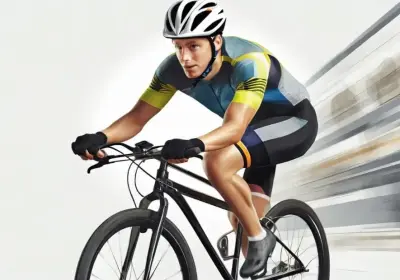









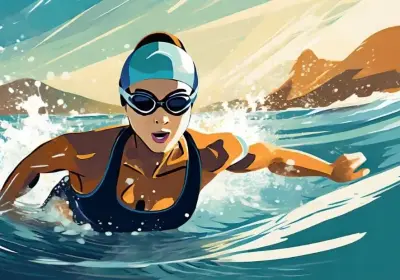
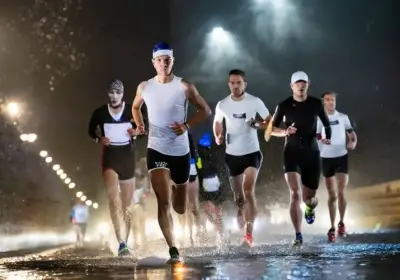


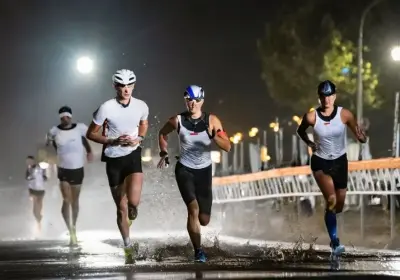







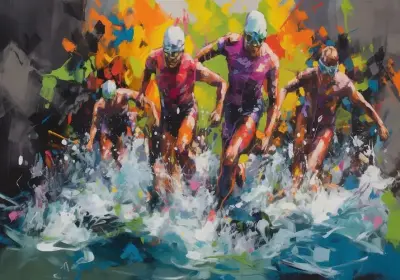
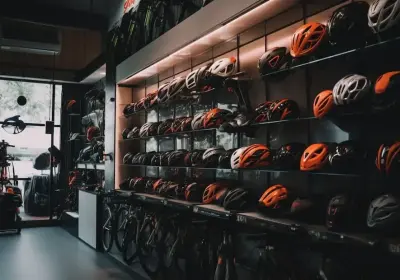
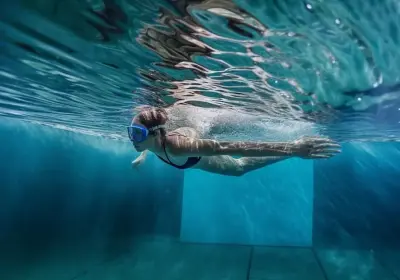
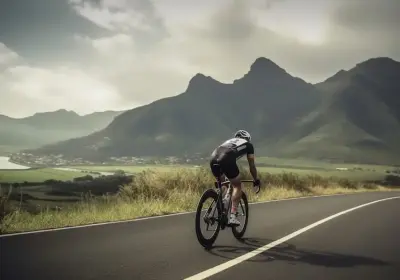
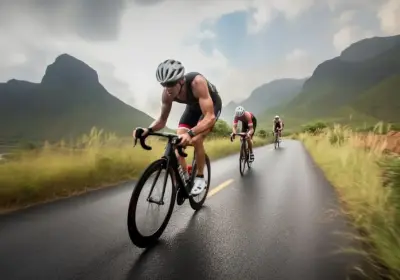





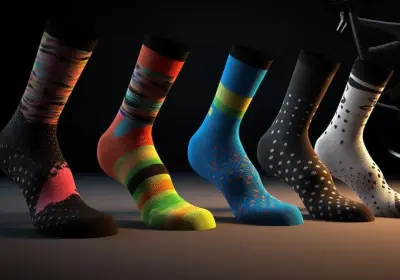


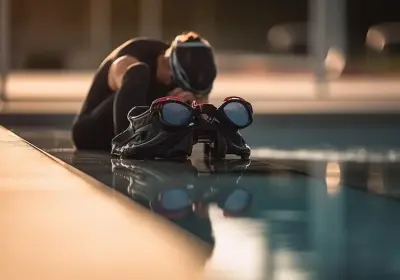
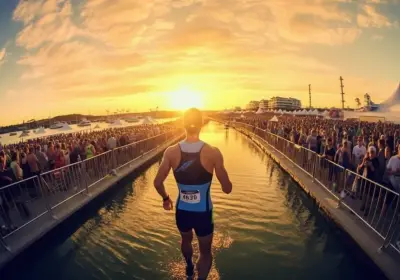
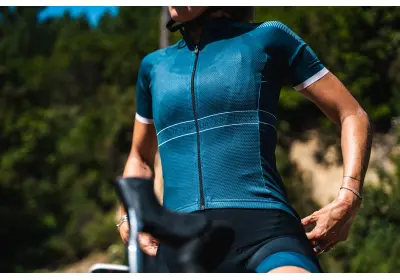
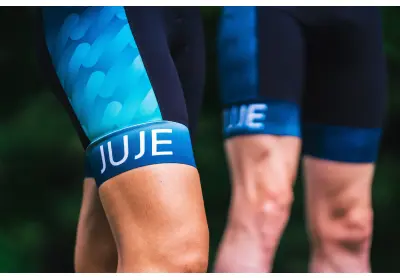




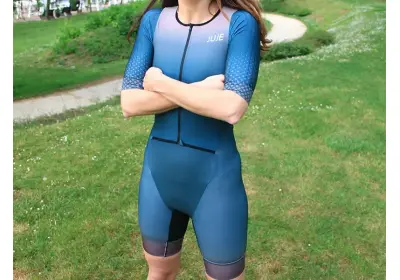
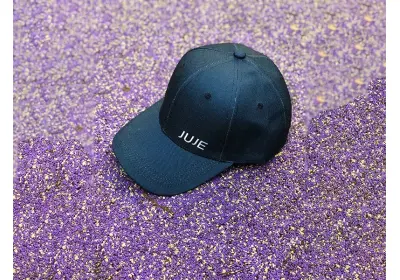
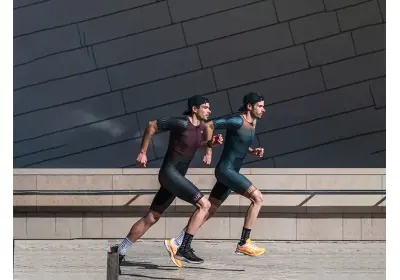
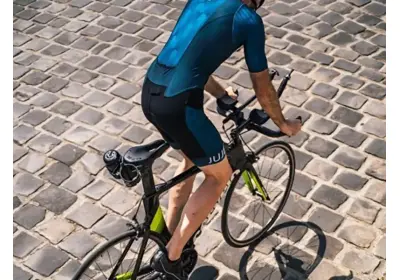
Leave a comment